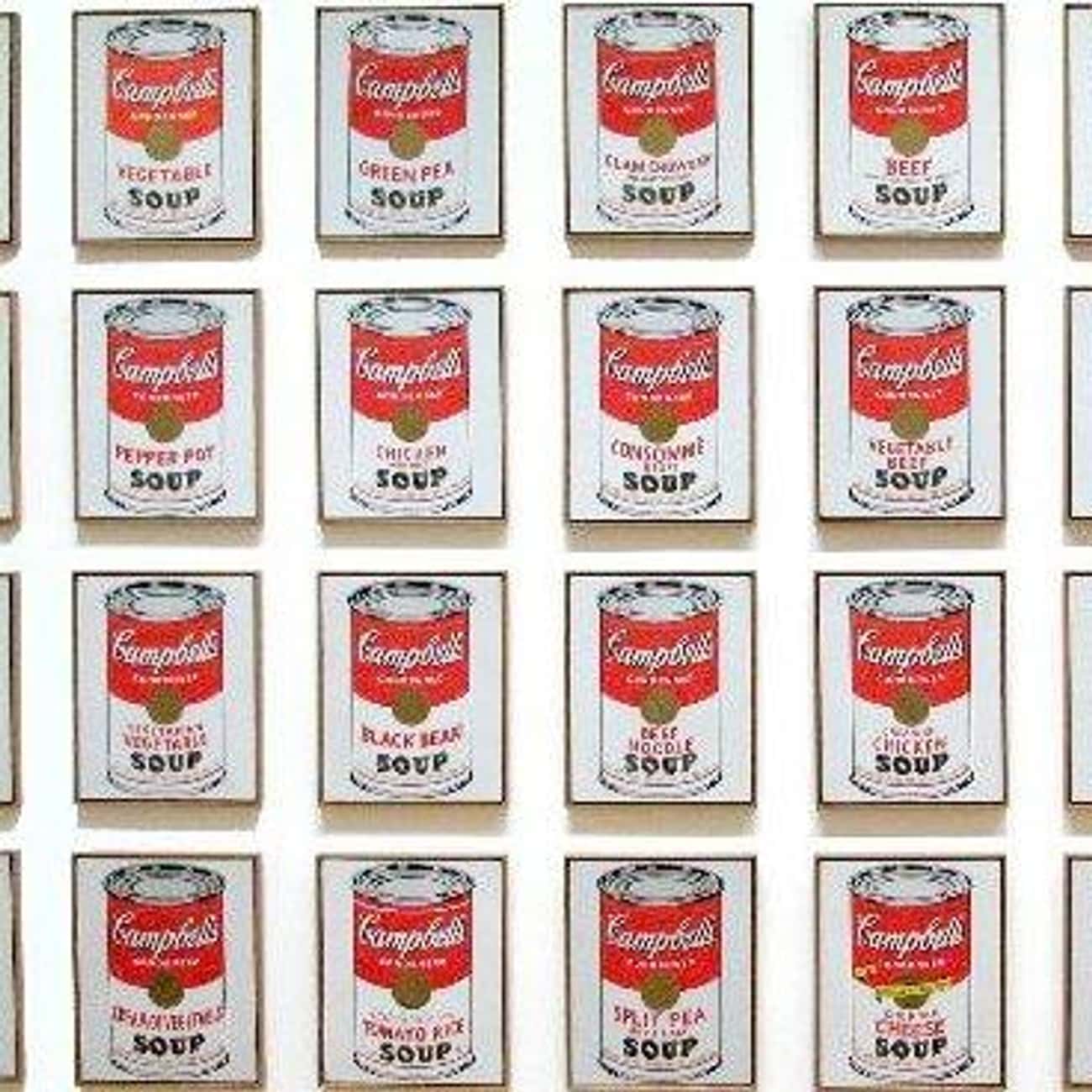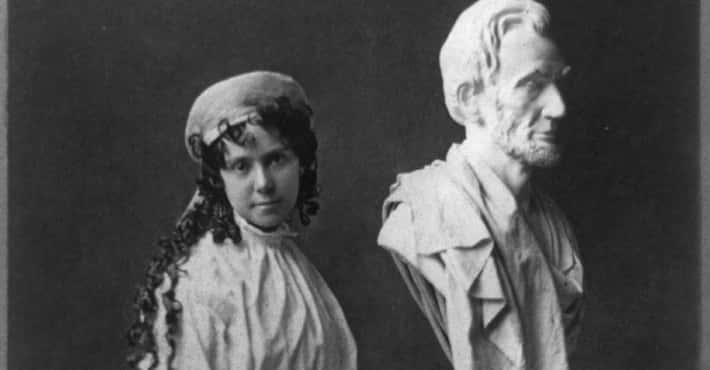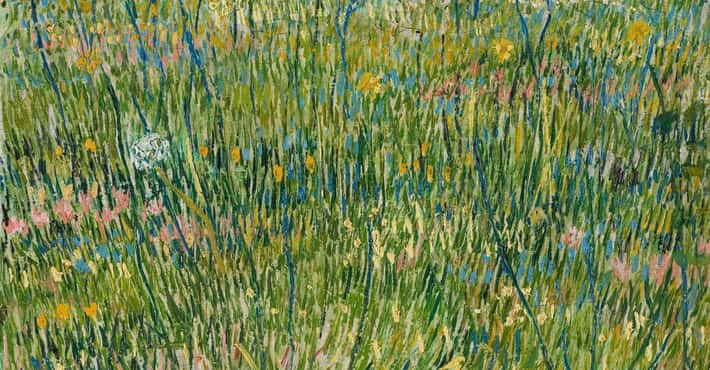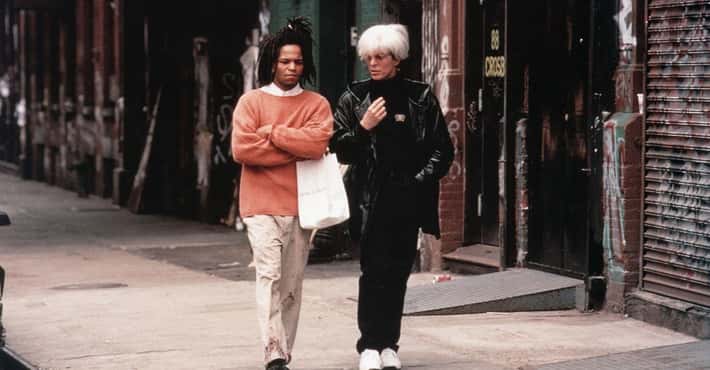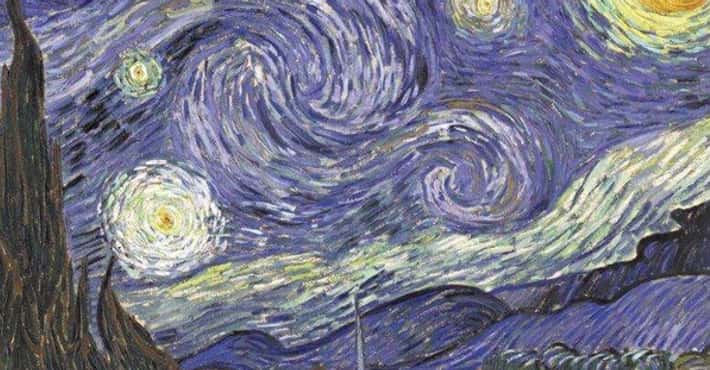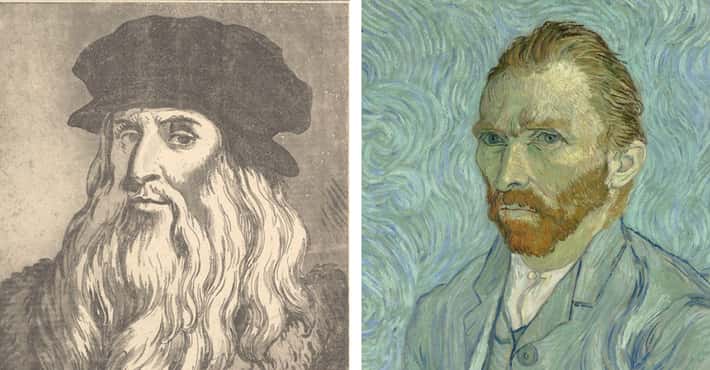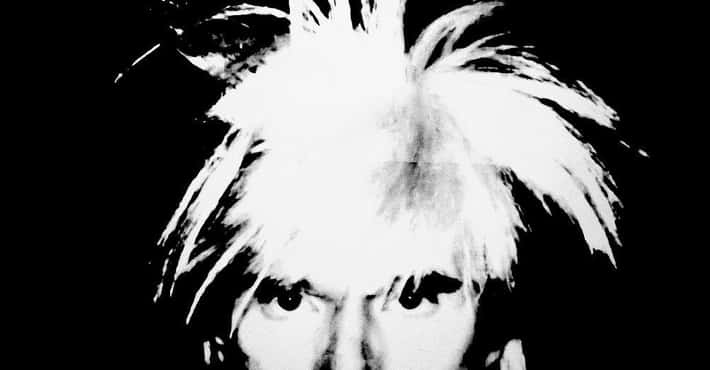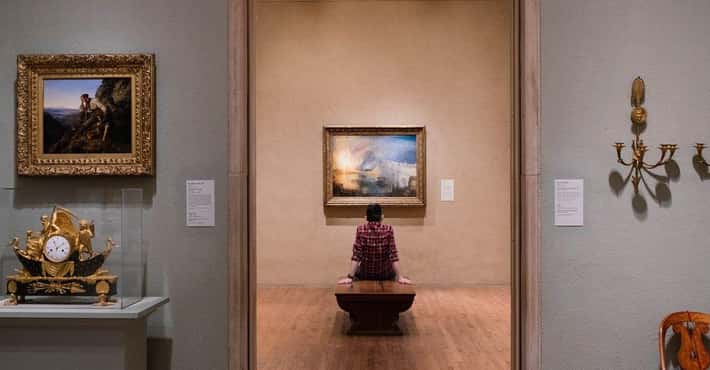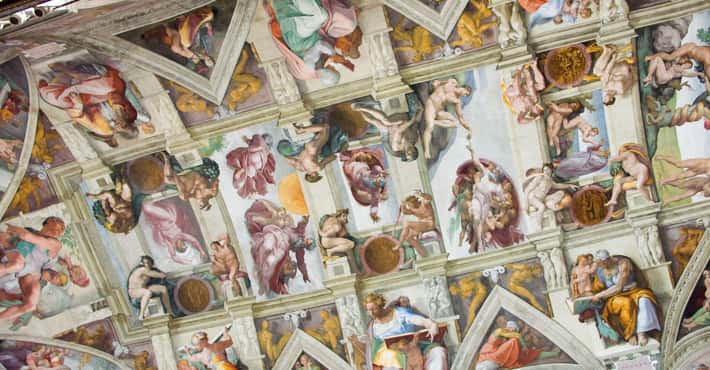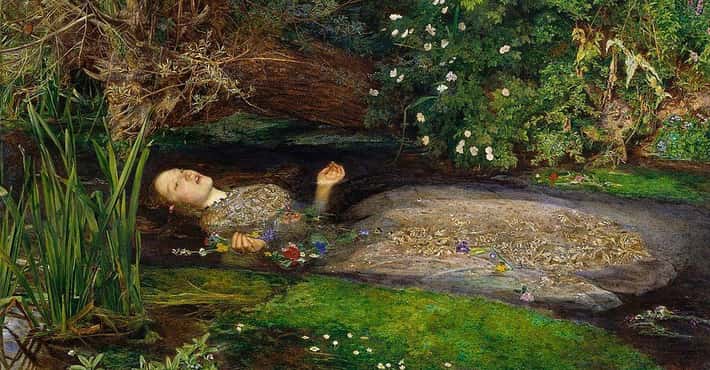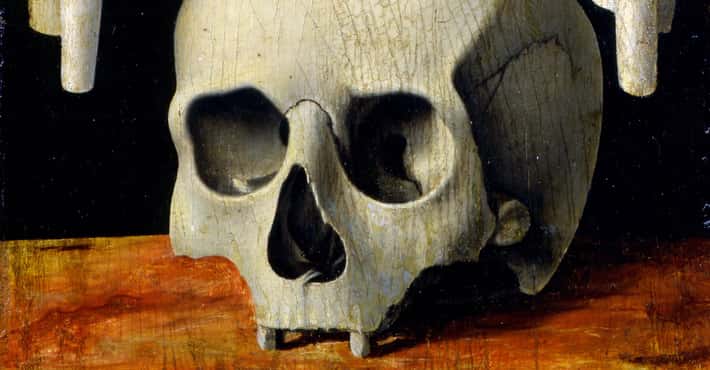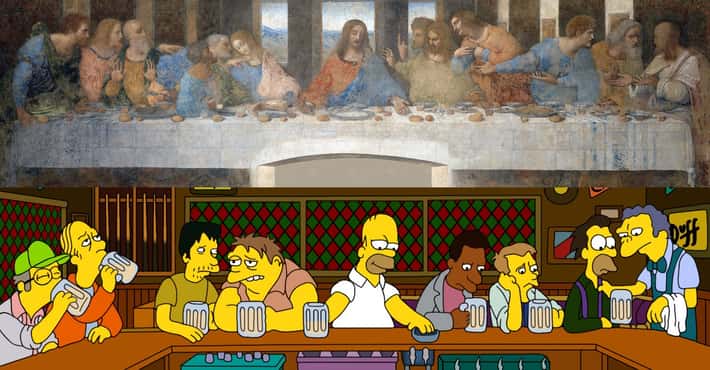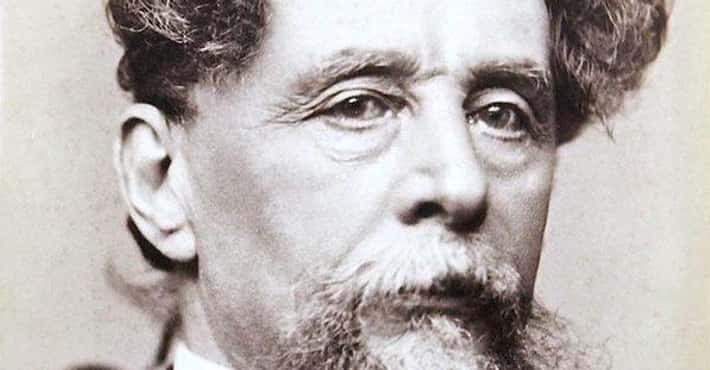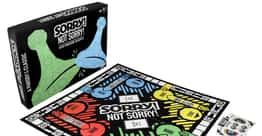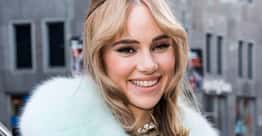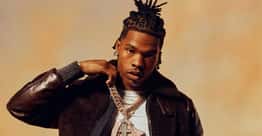Andy Warhol's Greatest Works Of Art
Andy Warhol is one of the most important and influential (as well as controversial) artists of the 20th Century. Andy Warhol Art is known for being abstract pop culture that questions, "What is art?"
The Andy Warhol most famous art piece is probably Campbell’s Soup Cans. However, you can make your opinion on the Andy Warhol most famous artwork below. Andy Warhol artwork features starts such as Marilyn Monroe and Elvis.
Which do you think are the Andy Warhol best paintings? Vote up your favorite Warhol artwork below.
- 148 VOTES
In 1983, Andy Warhol created a series of ten color screenprints called Endangered Animals that portrayed endangered animals from around the world: Siberian tiger, San Francisco Silverspot, Orangutan, Grevy's zebra, Black Rhinoceros, Bighorn Ram, African Elephant, Pine Barrens Tree frog, Giant panda and Bald Eagle.
- 257 VOTES
The Marilyn Diptych is a silkscreen painting by American pop artist Andy Warhol depicting Marilyn Monroe. The piece is one of the artist's most noted works.
- 355 VOTESPhoto: Metaweb / GNU Free Documentation LicenseCampbell's Soup Cans, which is sometimes referred to as 32 Campbell's Soup Cans, is a work of art produced in 1962 by Andy Warhol. It consists of thirty-two canvases, each measuring 20 inches in height × 16 inches in width and each consisting of a painting of a Campbell's Soup can—one of each of the canned soup varieties the company offered at the time. The individual paintings were produced by a printmaking method—the semi-mechanized screen printing process, using a non-painterly style. Campbell's Soup Cans' reliance on themes from popular culture helped to usher in pop art as a major art movement in the United States. Warhol, a commercial illustrator who became a successful author, publisher, painter, and film director, showed the work on July 9, 1962, in his first one-man gallery exhibition as a fine artist in the Ferus Gallery of Los Angeles, California. The exhibition marked the West Coast debut of pop art. The combination of the semi-mechanized process, the non-painterly style, and the commercial subject initially caused offense, as the work's blatantly mundane commercialism represented a direct affront to the technique and philosophy of abstract expressionism.
- 446 VOTES
In painting this portrait of John Lennon , Warhol evidently knew he was making more than a mere society portrait of a celebrity but portraying an iconic figure whose legendary status had recently been magnified by his untimely demise.
- 538 VOTES
A Cat Named Sam is a part of a 25-portrait series titled 25 Cats Named Sam and One Blue Pussy that Andy Warhol created in 1954 that he published with his mother, Julia, of the 25 cats they lived with in their New York City apartment.
- 639 VOTESPhoto: rocor / flickr / CC-BY-NC 2.0
Triple Elvis is a 1963 painting of Elvis Presley by the American artist Andy Warhol. The photographic image of Elvis used by Warhol as a basis for this work, taken from a publicity still from the movie Flaming Star, has become iconic and synonymous with the singer.
- 734 VOTES
The riots at Birmingham, Alabama, in the spring of 1963 were notorious across America, and with this wide publicity the event was one of the climaxes of the Civil Rights Movement. Supporters of Martin Luther King, protesting at segregation at lunch counters, were outmaneuvered by the police with dogs and water hoses, and King himself was taken into custody. Warhol contributed this small print to a portfolio of work by ten artists, published the year after the riot. The image is changed only in size and status from a newspaper photograph. In the form of a print in this portfolio, Race Riot commemorates the tensions in American popular life at the time, and forcefully illustrates the distance of the arts from such events.
Ten Portraits of Jews of the Twentieth Century is a 1980 series of ten paintings by Andy Warhol...The idea for the series was suggested to Warhol by art dealer Ronald Feldman. The subjects of the portraits were subsequently chosen by Feldman after consultation with the director of the art gallery of the Jewish Community Center of Greater Washington, Susan Morgenstein... Warhol nicknamed the series "Jewish geniuses".
- 935 VOTES
Self-Portrait , one of the last self-portraits Warhol painted before his passing, may be considered the anxious meditation of an aging artist...The monumental scale of Self-Portrait suggests that Warhol’s obsession with celebrity encompassed himself. Yet unlike nearly all of his portraits, which commonly include the sitter’s neck and shoulders, this otherworldly image presents the artist as spectral, his acid green, disembodied head like a skull looming out of the black background.
- 1035 VOTESPhoto: Metaweb (FB) / Fair useGreen Coca-Cola Bottles is a 1962 painting by Andy Warhol that depicts numerous Coca-Cola bottles.
- 1126 VOTES
Portrait of Maurice was a commissioned portrait for Gabrielle Keiller. Andy Warhol used synthetic polymer paint and silkscreen ink on canvas, along with Polaroids of Maurice, in order to create this piece. Warhol himself was also a dachshund owner.
- 1227 VOTES
Warhol began his Jackie series shortly after the shooting of John F. Kennedy in Dallas. As the basis for his paintings, he selected eight photographs from the mass-media coverage of the assassination and cropped the pictures to focus on the president's widow.
- 1335 VOTES
In 1972 U.S. President Richard Nixon traveled to China to meet Chairman Mao Zedong, ending years of diplomatic isolation between the two nations. This historic event captured the imagination of Warhol, who, between 1972 and 1973, created 199 silkscreen paintings of Mao in five scales. An extension of his fascination with celebrity, the Mao paintings utilize Warhol’s characteristic silkscreen process to transfer to canvas one of the most recognized portraits in the world: the photograph of Mao reproduced throughout China during the Cultural Revolution (1966–76). As interpreted by Warhol, these works, with their repeated image painted in flamboyant colors and with expressionistic marks, may suggest a parallel between political propaganda and capitalist advertising.
- 1425 VOTES
Of the three types of self-portrait series completed by Andy Warhol in the 1960s, this series is arguably the most well-known. Warhol fulfills a certain vision of his personality in the self-portrait: he appears to gaze out of the canvas, studying his surroundings as an observer of modern life. At the same time, Warhol is portrayed as a vibrant icon in these works, a celebrity and a brand in his own right. Unlike in the portraits of Marilyn Monroe or Elizabeth Taylor of the 1960s, Warhol does not use the deterioration of the image produced by screen prints over time as a device; instead, he places an emphasis on the changing colors and contrasts.
- 1533 VOTESPhoto: rocor / flickr / CC-BY-NC 2.0
Andy Warhol's Brillo Boxes are precise copies of commercial packaging. While they fulfill the idea that art should imitate life, they also raise questions about how we identify and value something as art.
- 1625 VOTES
Andy Warhol's Sixty Last Suppers (1986) is an outstanding example from the artist's great final painting series. Executed near the end of his life, the monumental piece — the largest painting by the American Pop artist ever to come to auction — takes up the themes of religion and loss that were so key to his work.
- 1727 VOTES
Reigning Queens is a 1985 series of silkscreen portraits by the artist Andy Warhol of Queens regnant.The screenprints were presented as a portfolio of sixteen; of four prints each of the four individual monarchs. The subjects were Queen Elizabeth II of the United Kingdom, Queen Beatrix of the Netherlands, Queen Ntombi Twala of Swaziland and Queen Margrethe II of Denmark.
- 1825 VOTES
Warhol had a longstanding interest in drag queens, and more broadly, in artifice, role-playing, and the construction of identity. In his numerous Self-Portraits In Drag photographs, he was less interested in revealing himself than in presenting a mask, just as he carefully cultivated a superficial, depthless celebrity persona in life. Nevertheless, in this image, his masculine features are barely disguised behind his wig and make-up, resulting in a poignant testament to vulnerability and exposure.
- 1920 VOTES
The Oxidation Paintings is a series of "paintings" done by coating canvases with wet copper paint and afterwards urinating on them, urine which oxidizes and changes color. In most cases, the urine does not belong to Warhol, but to his friends. According to Bob Colacello, Warhol once said: "It's a parody of Jackson Pollock", alluding to Pollock's legendary emission into Peggy Guggenheim's fireplace.
- 2024 VOTES
Ten Lizes by Andy Warhol represents Elizabeth Taylor's face repeated in a series of black and white portraits. Created during Warhol's early period when he was one of the most famous pop art creators, Ten Lizes uses a portrait of Elizabeth Taylor taken for promotion purposes for the Columbia Pictures film "Suddenly Last Summer". He used this same portrait numerous times in other artworks.
- 2117 VOTES
Andy Warhol's large series of Rorschach paintings were inspired by the so-called Rorschach test, devised by the Swiss psychologist Hermann Rorschach. The test requires patients to say what they see in a set of ten standardized ink blots; in this way Rorschach believed we might gain access to unconscious thoughts. Warhol believed that much abstract painting functioned in a similar way: instead of artists being able to communicate thoughts through abstract form, as many believed, he thought that viewers simply projected their own ideas on to the pictures.
- 2214 VOTES
Andy Warhol's collaboration with Basquiat, which spanned two years between 1984-5, energized him and placed him amidst a young and more fashionable generation. General Electric with Waiter is typical of the pictures the pair produced together: Warhol contributed enlarged headlines, brand names and fragments of advertisements; Basquiat added his expressive graffiti. The success of the series rested on the cartoon qualities inherent in both Pop art and graffiti.
- 2323 VOTESPhoto: Thomas Hawk / flickr / CC-BY-NC 2.0
Created in 1967, the Stockholm Big Electric Chair is part of a series of works by Andy Warhol depicting an electric chair.
- 2419 VOTES
In 1962 Warhol began to cull images of tragic frontpage news stories. He silkscreened Orange Car Crash 14 Times. Warhol's distance from the work’s making parallels his diffusion of this gruesome image through repetition and deterioration. About the addition of "a blank canvas, the same background color," Warhol claimed, perhaps ironically, "The two are designed to hang together however the owner wants. . . . It just makes them bigger and mainly makes them cost more."
- 2513 VOTES
In Self-Portrait (Strangulation) Andy Warhol shows himself seemingly in a life-threatening situation. The hands of an unseen culprit suffocate him, while his eyes are directed heavenward rather like a martyred saint. The predominantly dark colours, some partly obscuring his head, as well as the ‘expressionist’ brushwork, give the paintings a distinctly ominous feel.




